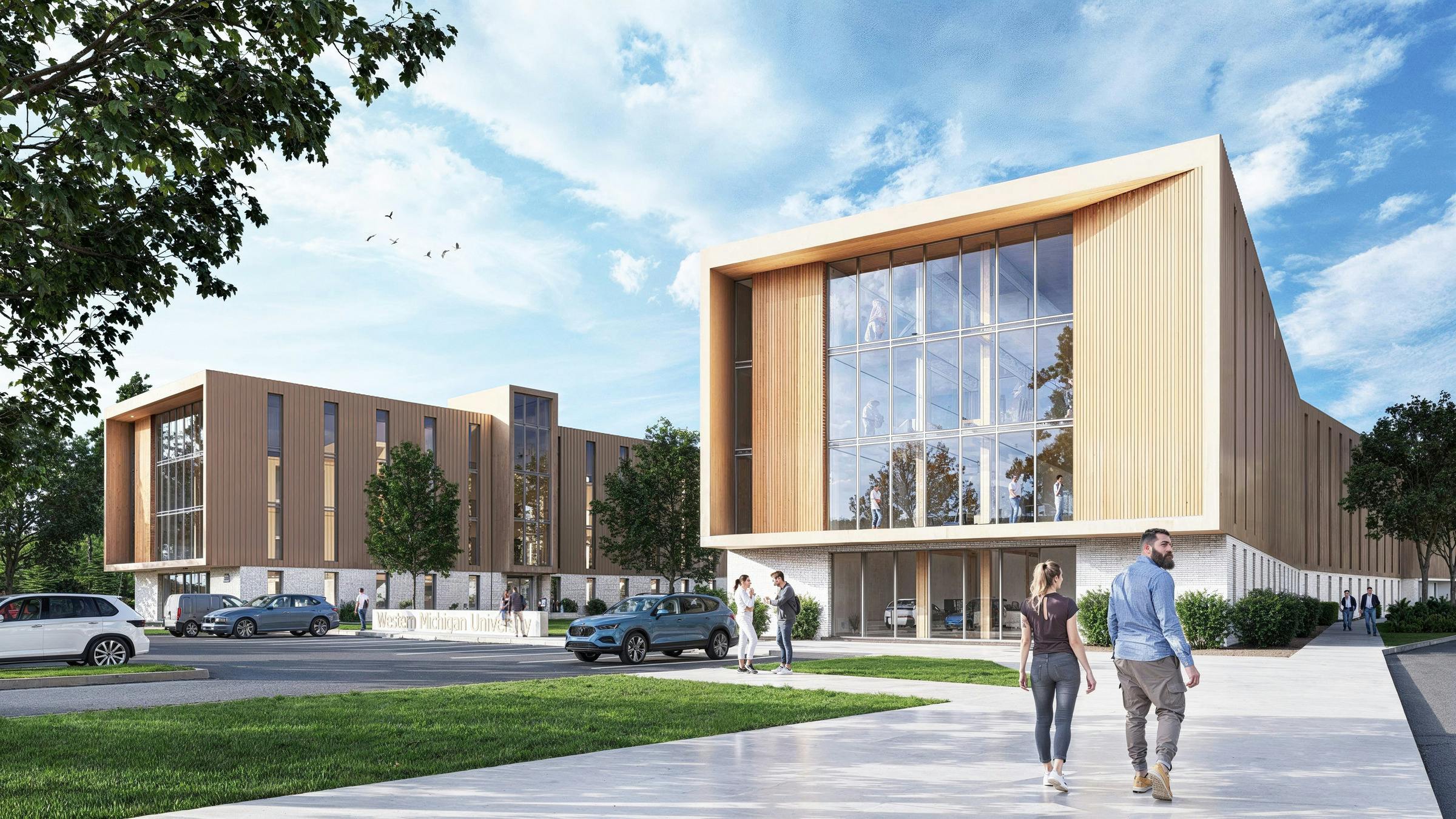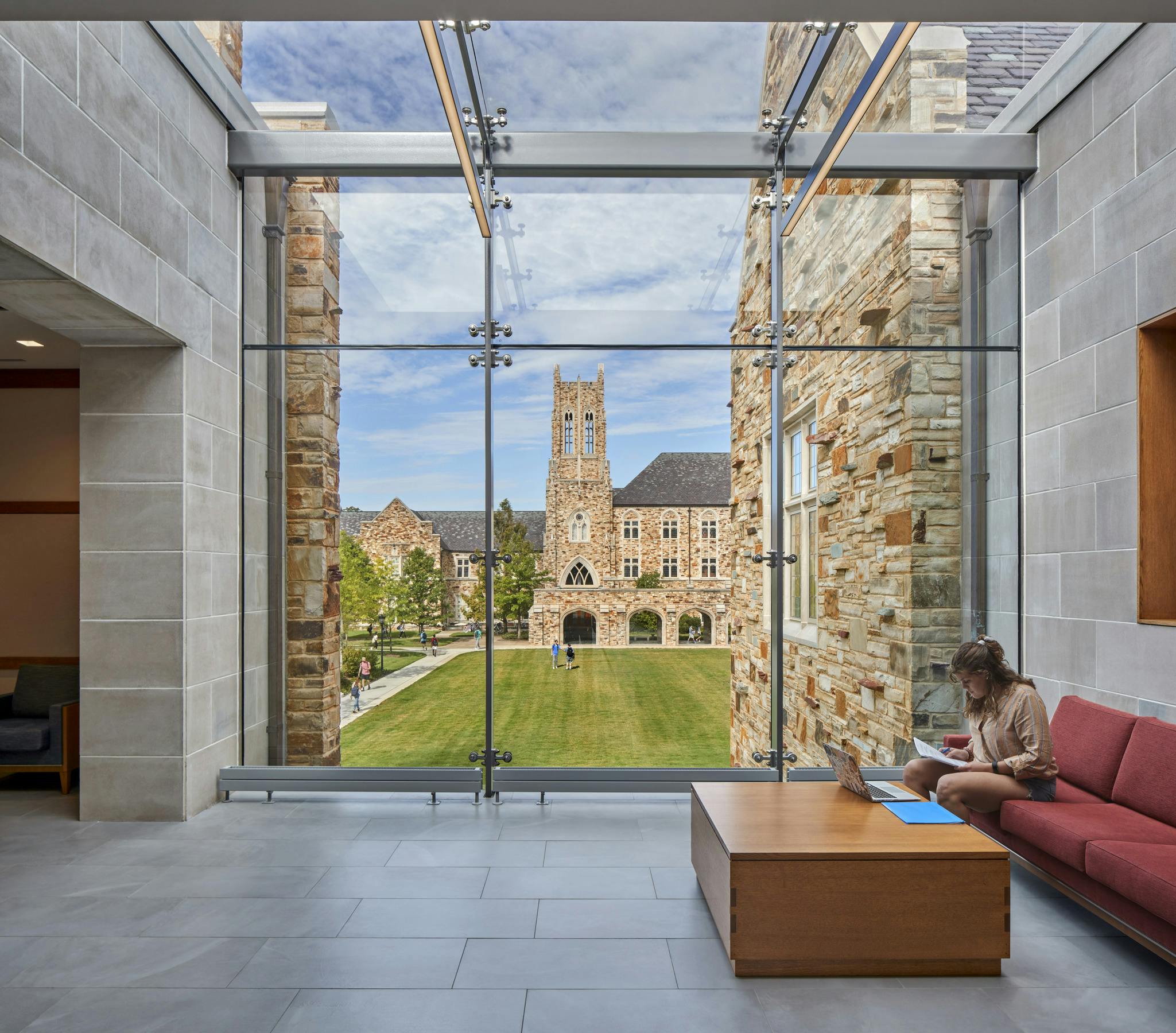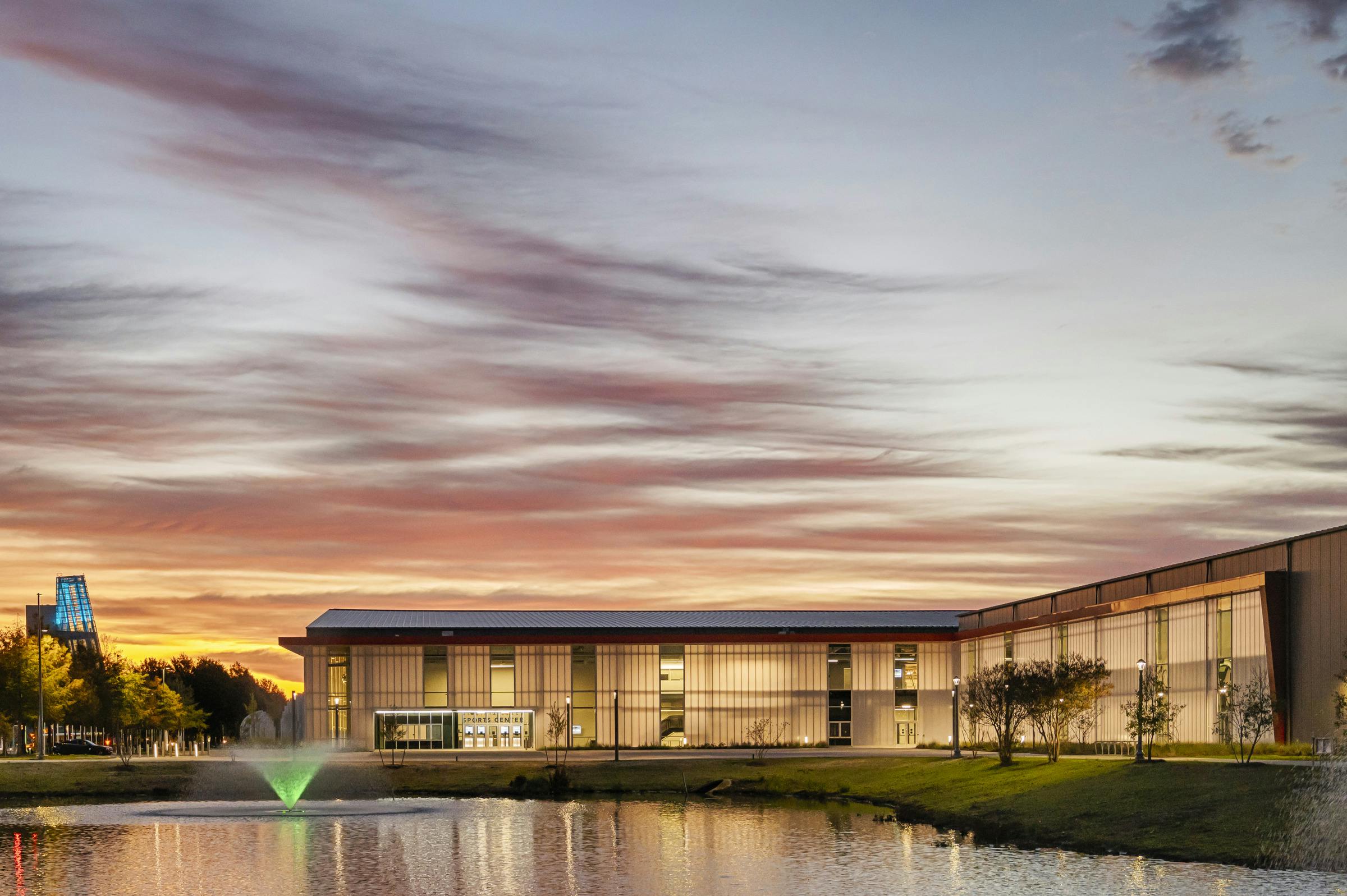



Designing for Generation Alpha
By Tom Zeigenfuss, Higher Education Market Leader, Hanbury
They are already influencing the future of education, and by 2030 they will begin shaping the culture of college campuses across the country. Born between 2013 and 2025, this digitally native, wellness-conscious, and diversity-centered generation is arriving with new expectations and needs.
For colleges and universities, preparing to support them calls for bold, research-informed, and intentional design strategies. The following white paper is tailored for university leaders, facilities planners, and student affairs professionals seeking to future-proof their campus housing portfolios.
Generation Alpha is growing up with unprecedented exposure to technology, an awareness of mental health, and an expectation for personalization in nearly every aspect of life. Their upbringing during a pandemic, combined with millennial parenting styles and ubiquitous digital access, is already shaping their worldview.


It’s important to understand where Generation Alpha stands in relation to previous generations. There are important statistics and trends that can help to give context to the issues and environment that they will inhabit.


The issues that matter most to them and the life priorities they have will shape their values as they mature.






While the key elements of Generation Alpha’s size, values, and relationship to technology create an understanding of who they are, there are simultaneously forces at play in the housing market that will need to be addressed moving forward – ideally in ways that optimize outcomes for this newest generation.
The overall housing market is going through dramatic changes. The number of people per household continues to decrease dramatically, leading to a significant need for more housing units. Meanwhile, many campuses have residential buildings that have outlived their useful lives, do not meet current energy standards, and have dramatic deferred maintenance needs.
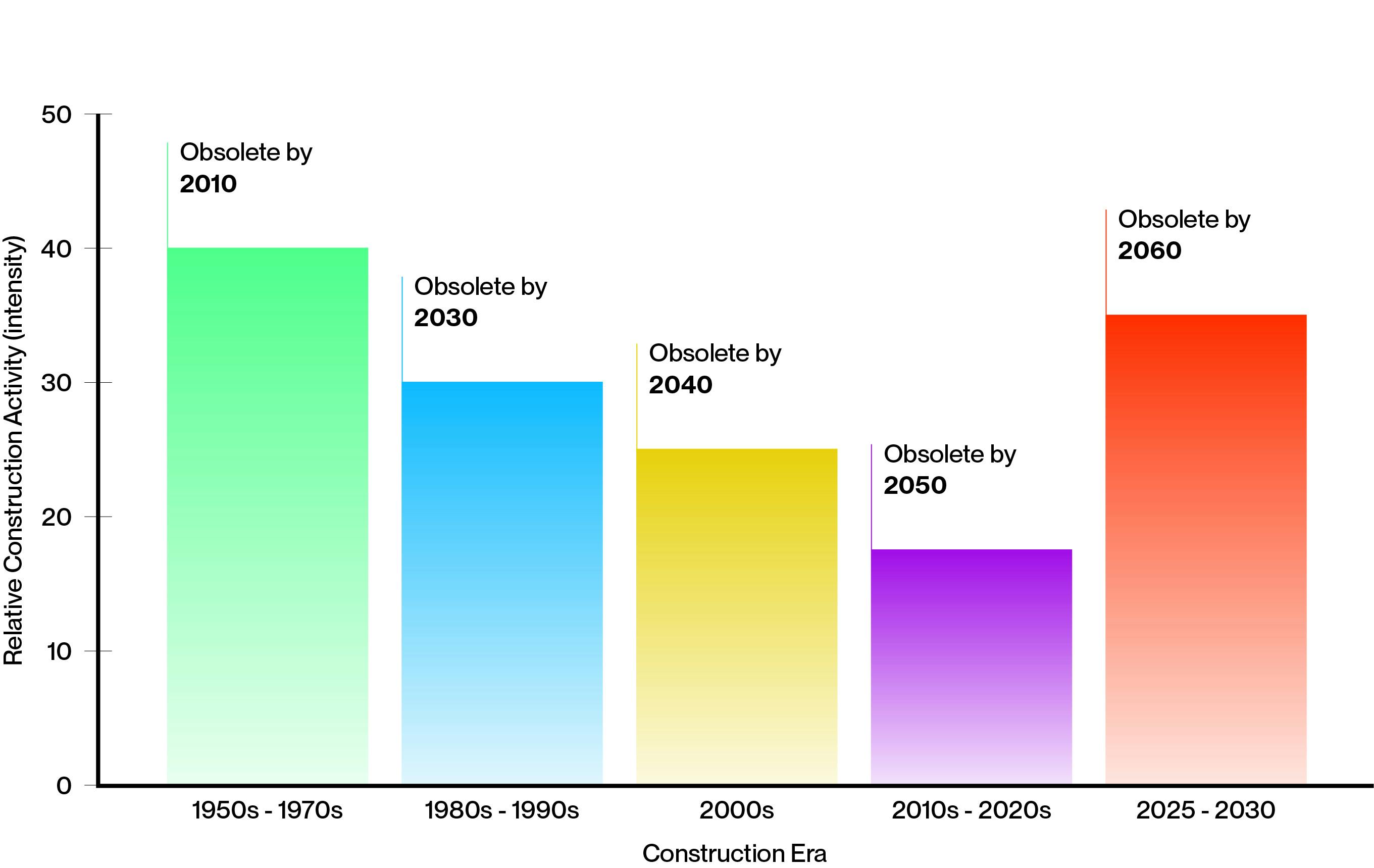

As universities tackle their housing needs, they must embrace the demographic shifts of Generation Alpha to attract, engage, and retain students in a highly competitive Higher Education environment. The intersection of technology, wellness, and intentional space planning must become central to housing strategy. This paper outlines five critical areas of focus and provides a university-specific lens on actionable next steps.


1. Digital-Native Needs & IRL Integration
"We must provide the technology Gen Alpha expects, while actively promoting in-real-life connection, community, and non-screen engagement."
Gen Alpha students will arrive expecting seamless connectivity, app-based systems, and smart building features as a baseline. However, universities have a dual obligation: support these expectations while counterbalancing screen-dependence with opportunities for real-world engagement.
Design Response:
- Native technology that allows for seamless digital environments
- Layered environments that promote social interaction, co-working, and creativity
- Spaces that "deprogram" students from screens: community lounges, gamified programming, analog social spaces
Case Study: Creativity & Innovation District, Virginia Tech
Virginia Tech is pioneering data-driven design analysis by using anonymized lidar mapping to study interior geography and student migration patterns in their Creativity and Innovation District. Coupled with student surveys and focus groups, this technology helps them understand where, and for how long, students congregate, collaborate, or isolate, and how movement patterns relate to social interaction and learning outcomes. These insights will allow them to fine-tune future, qualitative and quantitative space recommendations for maximum impact.
"Understanding the behavioral return on square footage is essential. Lidar data gives us a new level of precision in aligning student movement with design intent and cost."


2. Affordability, Equity & Access
With rising tuition and more first-generation college students, institutions must offer dignity of choice at a variety of price points. The goal is to decouple quality from cost and to deliver inclusive, efficient solutions.
Design Response:
- Units make up 85% of the building area, so right-sizing is essential
- Micro-units, suites, and co-living models
- Tiered pricing based on amenities or unit types
- Mixed typologies within a single building to support socio-economic diversity
- Smart Blocks: standardization of materials and systems to control costs without compromising experience


3. Wellness & Mental Health
Gen Alpha is highly aware of their mental health and expects supportive environments. This extends beyond counseling centers and into everyday spaces.
Design Response:
- Natural light, acoustical control, and biophilic elements
- Sensory and retreat rooms
- Outdoor and movement-oriented spaces
- Integrated mental health touchpoints across residential life
“Designing for wellness isn't optional. It’s foundational to retention and student success.”
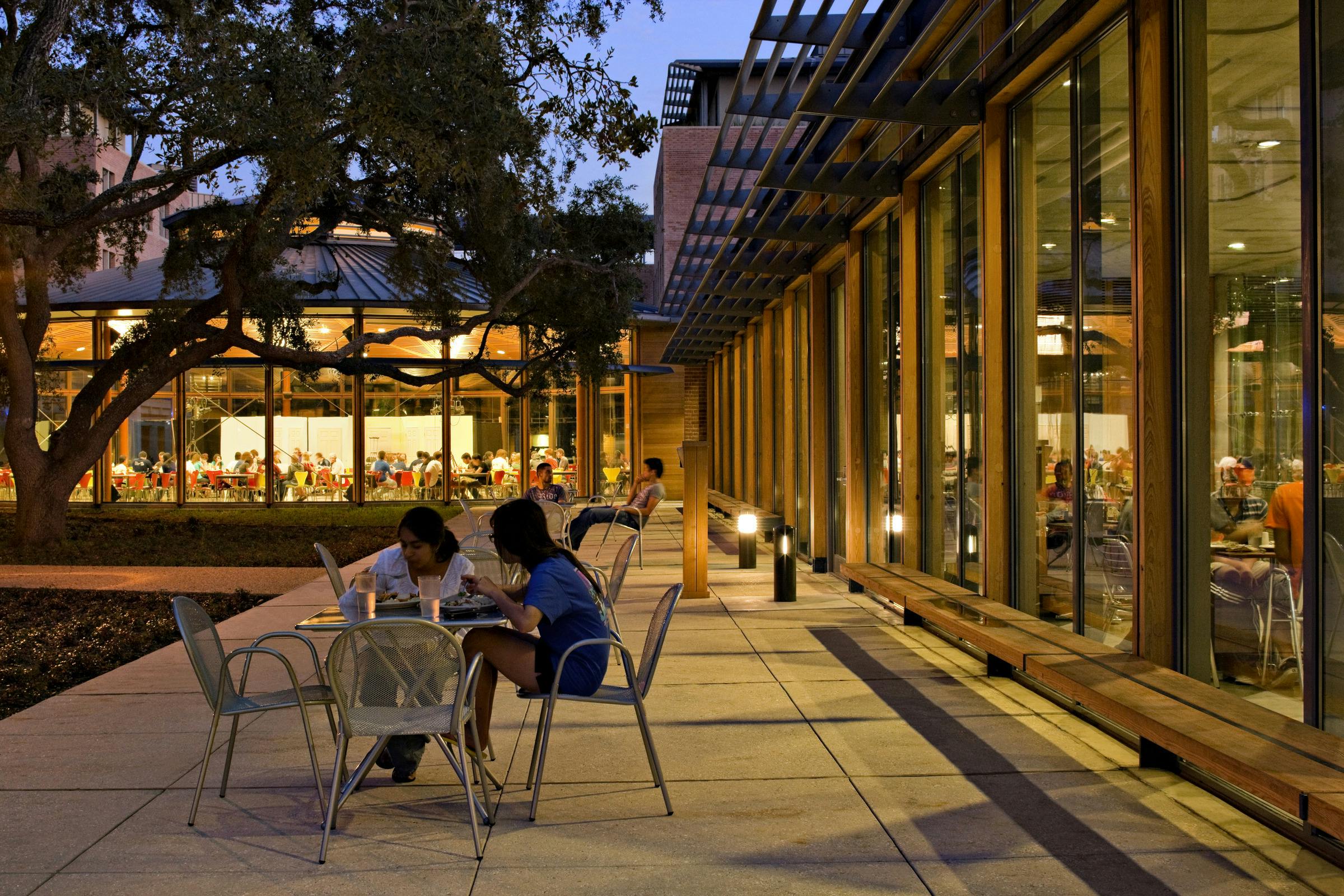

4. Sustainability & Climate Responsibility
Gen Alpha views climate action as a shared responsibility and expects their universities to lead by example. Building sustainably not only appeals to Generation Alpha’s ideals, but when done right, can also optimize schedule, operational, and financial goals.
Design Response:
- Net-zero, all-electric, or passive house strategies
- Visible green infrastructure (rooftop gardens, rainwater systems)
- Student-centered sustainability dashboards
- Hybrid mass timber systems that reduce embodied carbon


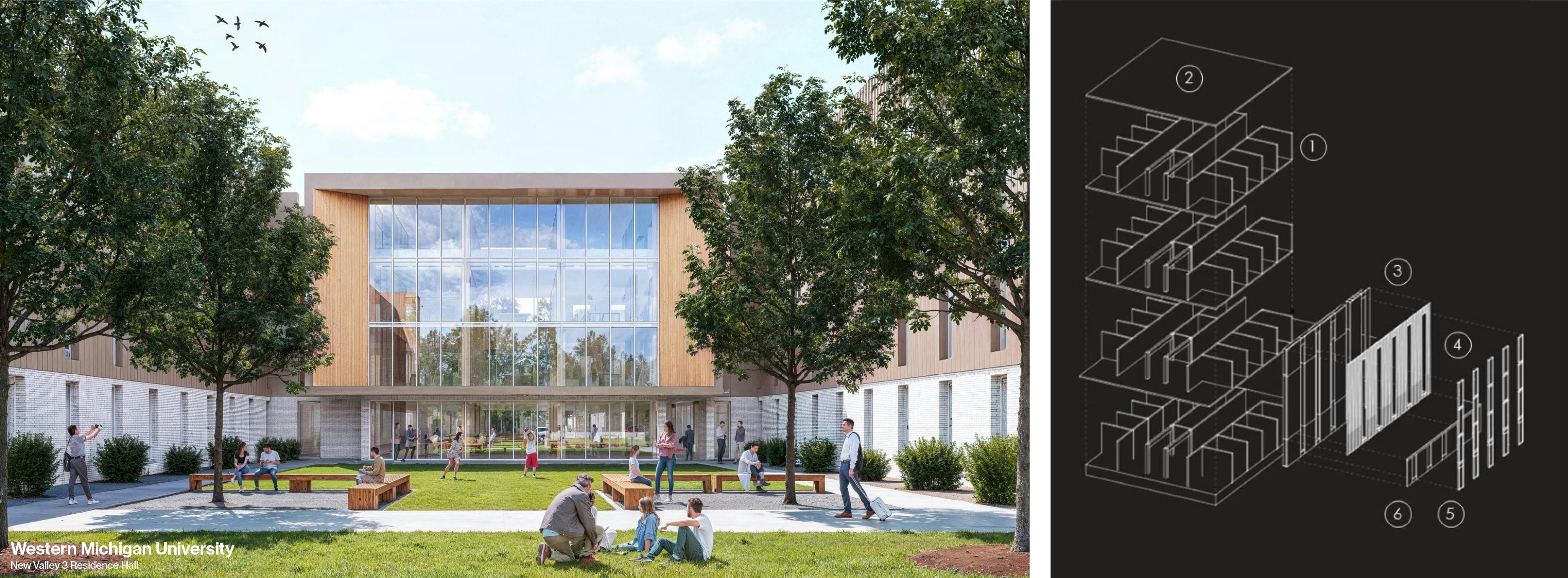

5. Flexibility, Identity & Personalization
Identity expression and the need for control over personal environments is core to Gen Alpha's psychology. Campuses must offer adaptive living and social spaces.
Design Response:
- Modular furnishings and reconfigurable units
- Zoning within residence halls for social vs. quiet uses
- Micro-communities that support peer relationships
- Inclusive design for neurodiverse and LGBTQ+ students
“Flexibility in space = psychological safety + operational resilience.”




Universities that blend empathy with innovation will shape the future of education. Gen Alpha is not asking for more - they’re asking for better. With the right data, partners, and design thinking, we can create housing that doesn’t just accommodate them - but uplifts them.
For further discussion or collaboration, contact:
Tom Zeigenfuss | tom.zeigenfuss@hanbury.design
Chelsea Bennett | cbennett@thesciongroup.com
